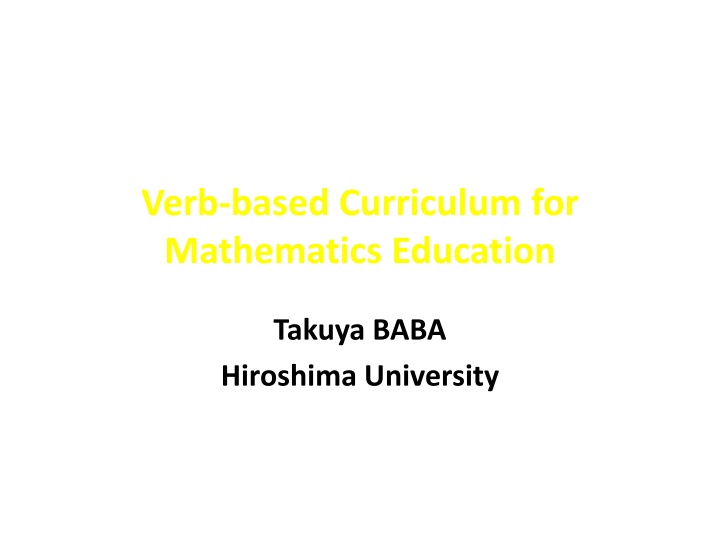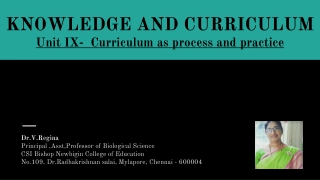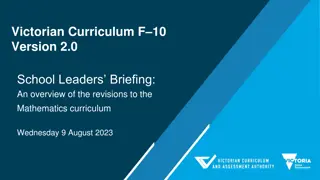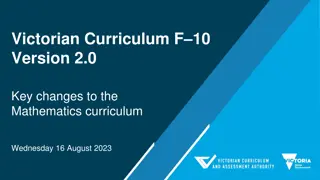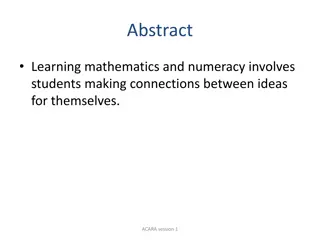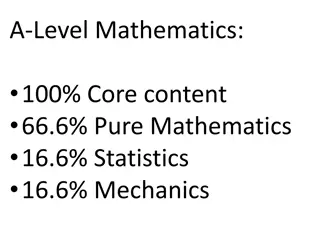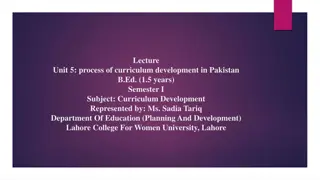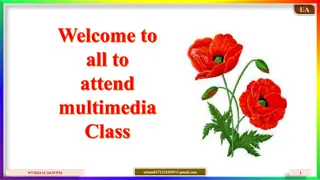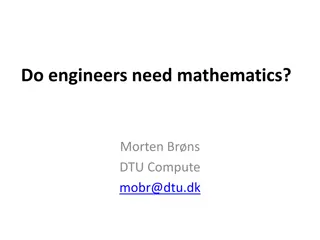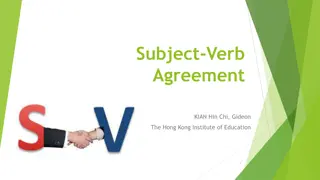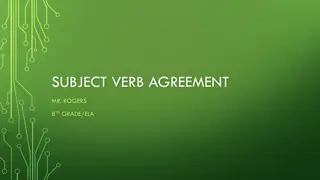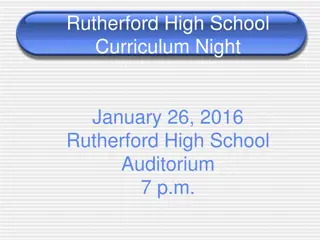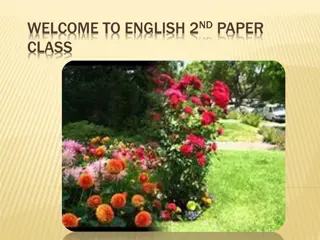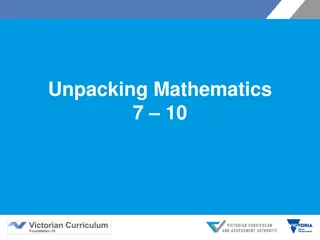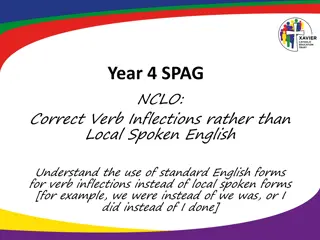Verb-based Curriculum for Mathematics Education at Hiroshima University
A detailed exploration of how mathematics education can be enhanced through a verb-based curriculum focusing on mathematical activities and deepening learning. This study delves into the importance of quality knowledge over quantity and emphasizes the role of mathematics in fostering critical thinking and problem-solving skills. Through analyzing Japanese Course of Study, the structure and characteristics of a verb-based curriculum are highlighted, offering insights into optimizing mathematical learning experiences.
Download Presentation

Please find below an Image/Link to download the presentation.
The content on the website is provided AS IS for your information and personal use only. It may not be sold, licensed, or shared on other websites without obtaining consent from the author.If you encounter any issues during the download, it is possible that the publisher has removed the file from their server.
You are allowed to download the files provided on this website for personal or commercial use, subject to the condition that they are used lawfully. All files are the property of their respective owners.
The content on the website is provided AS IS for your information and personal use only. It may not be sold, licensed, or shared on other websites without obtaining consent from the author.
E N D
Presentation Transcript
Verb-based Curriculum for Mathematics Education Takuya BABA Hiroshima University
Knowledge-based society require more than knowledge. From Quantity of knowledge to Quality of knowledge (knowledge about knowledge, systematization of knowledge) Mathematics plays an important role in this quality of knowledge.
Mathematical activity Counting, measuring are examples of mathematical activities. They are primary activity, and are reflected and deepened.
Activity deepens itself. How can we express deepening activity in the curriculum? Pirie and Kieran (1994)
Content 1. Initial idea of verb-based curriculum 2. Characteristics of activity and verb 3. Analysis of Japanese Course of Study in terms of verbs 4. Structure of verb-based curriculum
Background New course of study put emphasis on learning mathematics through mathematical activity at all stages of school education (MEXT 2008). According to constructivism (Nakahara 1995), children play a major role in mathematical activity not only on the real objects but also on mathematical objects.
Six universal mathematical activities From different perspective, Bishop (1991) argues that each culture has developed mathematics and there exist six universal activities to be observed at the basement of these mathematics. How to count -> grouping, base-ten, addition How to represent -> place value system
Initial idea of verb-based curriculum Noun-based curriculum Product Verb-based curriculum Process Focus the definition, concept, and formula to enable the speed and accuracy of solution mathematical thinking and ideas Structure Noun Verb Arrangement and structure of knowledge Arrangement and structure of activity Baba, Iwasaki (2001) the essence of activity is expressed in terms of verbs.
the objectives of this paper (1) To clarify characteristics of verbs, (2) To analyze the course of study in terms of verbs, and (3) To propose an example of verb-based curriculum.
More nouns than verbs Nouns occupy higher percentage than verbs among basic vocabulary, and the percentage goes even higher as the number of basic vocabulary in Japanese language. 60 50 40 Percentage Noun Verb 30 20 10 0 Vocaburary The graph of the percentage of nouns and verbs in basic vocabulary
Instantaneousness of activity The reason why verbs as signifier are fewer than nouns, lies in the property of activity as signified that is instantaneous and does not retain its locus of movement very long. For example, the activity 'to count' can be perceived by means of eyes and ears, but it only remains as an afterimage for a while and then its existence cannot be perceived by our senses any longer.
Elasticity of verbs The way of counting sheep and the way of counting sheets of paper are different. Probably the former is pointing at each sheep at a time, and continues one after another until it covers all. The latter may be turning over the pages.
3. Analysis of Course of Study in terms of verbs A: Numbers and Calculations B: Quantity and Measurements C: Geometrical Figures D: Mathematical Relations
How to analyze the Course of Study (1) Collect all verbs and quasi-verbs from the course of study (MEXT 2008) in Japanese Here quasi-verb is a noun in Japanese that behaves like a verb when it is suffixed by suru , which means to do . For example, measurement ( ) is suffixed by suru ( ) and becomes do measurement, which is equivalent of measuring activity. (2) Translate them into English using the English version of the course of study (MEXT 2008). (3) Analyze them according to grades and domains
Grade1 Content A. Numbers and Calculations (1) Through activities such as counting the numbers of concrete objects, to help pupils understand the meaning of numbers and use numbers. a. To compare numbers of objects by making one-to- one correspondence between objects. b. To correctly count or represent the number and order of objects. c. To make a sequence of numbers and to put numbers on a number line by judging the size and the order of the numbers. d. To consider a number in relation to other numbers by regarding it as a sum or difference of other numbers. e. To understand the representations of two-digit numbers.
Verb Grade 1 A count( ) understand( ) use( ) through( ) correspondence( ) represent, put (on the number line)( ) B compare ( ) enrich( ) through( ) Quasi-verb activities( ) calculations( ) meaning( ) compare( ) judge, explore( ) make( ) regard consider( ) in relation to( ) get to know( ) form the foundation read( ) compare( ) concerning( ) express( ) enrich( ) activities( ) measurement( ) understanding( ) experiences( ) position( ) observing( ) composing( ) activities( ) understanding( ) experiences( ) C familiar through( ) recognize( ) grasp( ) use( ) D use( ) represent( ) interpret( )
Basic results 66 verbs were collected in all. They consist of 60 transitive and 6 intransitive verbs. Transitive verbs are paid more attention to, because this research is to consider children s mathematical activities on objects, which can be expressed as transitive verbs. For example, children measure the weight . Some of them are no longer verbs (e.g. through ( ), nor correspond with one English word judge and explore for Japanese .
Further analysis Making activity an object of another activity The objects of the activity may be objects found in the environment and mathematical activity itself. The latter is called an objectification of activity. There are three types of such objectification such as quasi-verbs, how to, and masu-form. For example, in explore ways of the calculation (G2 ) , understand the meaning of measurements (G2 ) , and deepen their understanding of the representations of integers (G3 ).
Further analysis The role of verb to deepen and to extend The verbs, to deepen and to extend , similarly represent the nature of mathematical activity. When new knowledge has been developed based activity towards the previous knowledge that has been learned before. For example, deepen their understanding of the meaning and the representations of numbers in the grade 2 assumes the learning and understanding of the numbers in the grade 1.
Example: objectification of activity (G1) enrich their number sense, using concrete objects and understand the meaning and the representations (how to represent) of numbers -> (G2) enrich their number sense, using concrete objects and deepen their understanding of the meaning and the representations (how to represent) of numbers
4. Structure of verb-based curriculum Count-> represent-> understand Representation (How to represent)-> consider
G1 using concrete objects, enrich their number sense. understand the meaning and the representations of numbers, Through activities such as counting the numbers of concrete objects, to help pupils understand the meaning of numbers and use numbers. To compare numbers of objects by making one-to-one correspondence between objects. To correctly count or represent the number and order of objects. To make a sequence of numbers and to put numbers on a number line by judging the size and the order of the numbers. To consider a number in relation to other numbers by regarding it as a sum or difference of other numbers. To understand the representations of two-digit numbers. To get to know the representations of three-digit numbers in simple cases. To consider numbers using ten as a unit. G2 using concrete objects enrich their number sense. deepen their understanding of the meaning and the representations of numbers, To help pupils understand the meaning and the representations of numbers, and extend their ability to use numbers. To count objects by arranging them into groups of the same size, or by classifying them. Up to four-digit numbers, to understand the representations of numbers, understand size and order of numbers by the decimal positional numeration system. To understand relative size of numbers by regarding 10 or 100 as a unit. To consider a number in relation to other numbers by regarding it as a product of other numbers. To get to know simple fractions such as 1/2 and 1/4.
Numbers Concrete objects (1) 1 to correspond ence order and sequence of numbers Up to four digits (1, 2) Man digits, integers (3) Fractions, decimals (4) 1 Count Compare, Make sequence Represent number Arrange them into groups a Up to four-digit numbers ten- thousands hundred million trillion and of objects order and Consider in relation to Under- stand relative size by 10 or 100 as a unit 10 or 100 times 1/10 of Deepen understandi ng relative size of numbers or representations of numbers, decimal positional numeration system summarize the decimal positional numeration system of
addition and subtraction of natural numbers 1- digits Situations are used & 2- 2- & 3- digits 3- and 4-digits integers Know Understand Meaning based digit, algorithm, column forms Calculation on 1- based on 2-digit numbers, using algorithms column forms Calculation accurately appropriately Properties in Use, extend Calculation Use calculati on of & Explore Ways calculation of Properties Make use Check Consolidate Properties The results Properties the results Calculate
Reference Ascher, M. (1991) Ethnomathematics: A Multicultural View of Mathematical IdeasBrooks/Cole Pub. Baba,T., Iwasaki,H. (2001). The Development of Mathematics Education Based on Ethnomathematics (2): Analysis of Universal Activities in terms of Verbs International Journal of Curriculum Development and Practice 3(1), 65-75. Bishop, A.J. (1991). Mathematical Enculturation: A Cultural Perspective on Mathematics Education (Kluwer Academic Publishers). Ministry of Education (2008). Course of Study, Primary Education (Ministry of Finance Press) (in Japanese). Ministry of Education (2008). Course of Study, Primary Education (Ministry of Finance Press) (in English). http://www.mext.go.jp/a_menu/shotou/new- cs/youryou/eiyaku/1261037.htm Nakahara,T. (1995). Constructivism Approach in Mathematics Education (Seibunsha) (in Japanese). National Language Institute (1984). Research and Education of Vocabulary (Ministry of Finance Press) (in Japanese). Pirie, S., Kieren, T. (1994). Growth in mathematical understanding: How can we characterize it and how can we represent it? Educational Studies in Mathematics, 26, 165-190.
